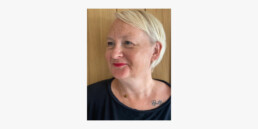A Tale of Two Ofsteds
An anonymous guest blog.
In the last 12 months I have had the pleasure (not always) of working in two comparable schools within the same local authority. Both schools, of similar size, face challenges based on the area they serve and the deprivation of their cohorts. Similarly, both schools have recently undergone Ofsted inspections and unfortunately on paper they are both graded the same.
It is in this respect that they are not comparable.
One of these schools is still promoting outdated pedagogical practice and using learning walks and book looks to terrorise and intimidate staff. Particularly when the most feedback ever given to a group of books is 'Why haven't you differentiated the task 5 ways in your lessons?'
In addition, practices such as printing out your planning every week to display in your classroom, ensuring your displays are all triple backed, triple marking every single book every day and not once providing CPD in staff meetings and INSETs were just accepted as normal. Teacher mental health and wellbeing was not mentioned and I was once in a situation with a senior leader where it was actively dismissed. All of this before you even start to unpick curriculum design, sequencing and intent. Needless to say, it was thin in all areas and in many non-existent.
In complete contrast, School 2 has invested serious energy and time into teaching and learning with weekly staff development sessions, a coherent and consistent curriculum threaded through with actual evidence and research and clear explanations for decisions being made and followed through. Staff are supported; their time protected and decisions made so that even when expectations are high, workload can still be manageable. The culture at this school is quite frankly, refreshing. People have professional discussions and engage in their practice on a deep level with a focus on achieving high outcomes and experiences for the pupils. Every decision is carefully crafted and has strong fidelity to the core vision and values running through the school. Most notably, staff well being is acknowledged and there is no culture of ‘it’s a tough job, you just have to turn up’.
Don't for a moment think that I am claiming perfection for School 2 as that would be frankly naive but the difference is extraordinary when compared to School 1. With Ofsted looming, the message from School 1 was 'do more on your displays, marking and make your lessons jazzy'. Staff were required to have Ofsted ready lessons for the moment the call came. School 2 was required to carry on with showing what we do on a day to day basis. It was still stressful and exhausting but in no way was it insincere or disingenuous.
In School 1 a weekly staff meeting was billed as ‘CPD’ and staff were asked to create a mood board in their year group teams. All of this the night before a ‘mocksted’ and needless to say said mood boards languished at the back of cupboards proving to have little impact on students or staff development. In School 2, weekly staff meetings are focused on a specific area identified to impact pupil outcomes. For example using the EEF and other sources to identify what effective feedback is and how teachers can use this practically in lessons. This short summation above does not even do justice to the complexity and depth of the CPD delivered in practice over a number of weeks.
My question is: then how can these two schools be graded the same? School 1 had one inspector for 2 days and has a thin report of two pages stating it is 'good'. School 2 had 3 inspectors who were still there at 6.30pm on day 2 meeting with leaders and was also rated 'good'. The two are not comparable. Not comparable by the experience of staff working there, nor by the pupils turning up each day. Not by the parents and community surrounding it or the curriculum delivered.
There is so much dialogue around accountability and Ofsted ‘ramping up inspection rates’ but in essence if we are not using the same rigour we expect teachers to apply in their teaching to the inspections of such are we not just permitting poor practice to continue unchallenged? I, for one, have escaped the tortuous delivery of VAK learning styles needing to be incorporated in every lesson but if Ofsted perceive that as ‘good’ then there must be others still drowning.
Image by fabrikasimf on Freepik.
The Joy of Headship
A guest blog by Sarah Hussey.
Teaching is tough, headship is hard – those of us who work in education know these things to be true! As a head teacher of 12 years and counting I cannot argue with these facts. Yet… I find sheer joy in my job pretty much every day. How you might well ask? By changing the narrative.
In 2019 a heady mix of many factors led me to be signed off work with chronic stress and anxiety for almost 6 months. Impending inspection, results that were far from ideal, managing staff, budget worries, a pretty hideous parental complaint that had me filing harassment charges with the police, and let’s not forget being peri-menopausal (that needs a whole blog in itself!). I was well and truly done and took to my bed where I stayed for some time! Then we had the first lockdown - a truly surreal time for us all.
I am happy and I love my job.
As I write this I am less than a week away from returning to school after our well-deserved break. I still have an impending inspection (God, I wish they would just get it over with), even more budget worries, and concerns about how my families and staff are going to survive the cost of living crisis. These are just a few of the things that are running through my mind. My mind, however, is at least working now as the wonder of HRT has defeated the damned brain fog and anxiety. But, I am looking forward to the new term. I would go as far as saying I am happy and I love my job. How have I got to this position?
The one thing about being mentally at rock bottom is that you can only move up again: I learned the hard way.
The one thing about being mentally at rock bottom is that you can only move up again. I thought for a few months that my passion, the fire that burned in my belly about doing the right thing for all our children had been extinguished and that made me really sad. The truth was that it had become a tiny, flickering ember which grew as I began to feel stronger. Now, I am not advocating that anyone should become this ill because of a job: well-being is vital and should never ever be an afterthought or a bolt on to your curriculum. I learnt this the hard way.
Dig deep and remember your values.
When things get tough you need to dig deep and remember your values – your reason for leading your school. I don’t mean the values that NPQH tell you to have; I mean the things that make the fire in your belly stay alight. I do this job because after 25 years in education I still believe education is a right for all children and can and does open up their world. I believe that a good school is a place where children, their families and your staff feel that they belong. The core of a good school is not necessarily zero-tolerance uniform/behaviour policies etc. It is relationships. Without these, progress will never be made.
Change the narrative – flip that switch.
I know it is tough and I know there are days when you would rather be doing anything but running another parent’s session about phonics or internet safety, but if you try to change the narrative, flip that switch in your head, it can and will make a difference.
What a privilege it is to be in this position.
When I complain about being all things to everyone - teacher, mental health worker, social worker, counsellor - I remind myself what a privilege it is to be in this position. We cannot change the lives of all our families, but we can go some way to helping them. Sometimes just listening to them is all that is necessary. Our support can lead to a family leaving an unsafe home and changing their own narratives. How wonderful that we can have a hand in creating excellent teachers, either being a part of their training or their ECT years. That is the future of teaching in our hands. Don’t you get an immense feeling of satisfaction when a learning support assistant grows in confidence, learns from your mentoring and the CPD you provide, and goes on to become cracking teacher? How amazing is it that we can encourage the curiosity of our children, that we can teach them to read, which opens up the world around them. I love it when ex-pupils come back to tell us what they have achieved and tell us about the part we played in that – priceless. In what other job can you leave the boring paperwork on your desk and go and find thirty four-year-olds to play with. Their energy and view of life is really inspirational!
I allow my staff to attend their children’s first day at school, their school plays and concerts and their graduations – they are special memories to be treasured.
Headship is a hard job. One of the ways to do it well is to learn not to listen. Don’t go ignoring everyone, but learn to choose the information that you think is important. Don’t be tempted to try every new initiative and if someone from your LA comes and tells you how to do something, ask them to show you the evidence it works. Remember no school is the same and your context will be different to others. Do what feels right for your school community. For me, the number one tip is look after your staff! I don’t mean organising meditation sessions or yoga with puppies, I mean creating an atmosphere of trust and support. Listen to them, let them know that you care but that you also care about the children. I started teaching when my daughters were very young. My head teacher would not allow staff time off for anything other than a funeral of your closest relatives. When I left an abusive relationship, I was given half a day to find somewhere for myself, the children, and 2 kittens to live! So, I allow my staff to attend their children’s first day at school, their school plays and concerts and their graduations – they are special memories to be treasured. It is worth it – for the one or two staff that might take the mickey, the rest give you their best every day of the week. They will enjoy working at your school in the environment that you have created.
If you want to do it, you can!
I cannot tell you Headship is the best job in the world (I mean being a cocktail taster on a Caribbean island sounds pretty good!) but I can tell you it is wonderful. It is joyous and I still love it. Don’t be put off by the bad press and those stories that you hear from others in the job. If you want to do it, you can! You can be a good head teacher and have a work life balance – but you have to do it your way and with integrity.
Golden Seams
A guest blog by Aini Butt.
We live in a world where achievement is applauded not the progress itself; beauty standards are set by the finished product and any imperfections are filtered out. So those who are seen as ‘broken’ or ‘wounded’ are told to ‘take your time to heal so you can move on’ or ‘heal and find your old self again.’ Even with the best of intentions when saying something to encourage or motivate others, are our words empowering or reinforcing society’s romanticised vision of healing?
Healing from painful, life-changing experiences is far from romantic and often there is no way back to the ‘old self’, and this is where I question this need to ‘heal and move on.’ It focuses on the past to form a different future; how is this possible when you fail to acknowledge the present?
During a long conversation with a dear friend, we looked back at our similar journeys and revisited our younger innocent selves. As the saying goes, ‘Ignorance is bliss,’ and it sure was until the blessing turned into a curse and became a tool of torture used by those who were supposed to reciprocate the trust and love they were entrusted with. Is this the former self we are told to return to? Is that what ‘finding yourself’ means: to laboriously dig through the rubble of your past to find yourself broken into smithereens under the weight of your dreams and desires, and ‘take time out to heal’ in order to become whole again?
The Japanese art of Kintsugi (golden seams) teaches us the valuable lesson that there is no return to the ‘unbroken’ past; therefore, there is no attempt to hide the breakage either. Instead, lacquer and gold pigment are used to elevate the broken piece. Often, this art is drawn upon to reiterate how our imperfections make us unique and more beautiful. What if this isn’t about the finished piece and the beauty of its shining gold? What if the golden seams are telling the untold story of the creator’s expertise, which reached new heights of craftsmanship with each mended piece? Again, those who will see the finished piece, will congratulate the artist on their creation’s beauty, but the struggles of finding the appropriate tools and resources needed to mend the broken pieces often remains untold.
Similarly, stories of those who are on a journey of self-healing often remain untold. We are so focused on the destination, which we often refer to as ‘finding ourself’, that we fail to recognise that the ‘self’ is not the end outcome in the distant future. It is the work in progress in the here and now- the present. Those who are on a journey of self-healing through self-discovery will know that it requires honesty and courage to recognise that there is no return to the past. They take this as a motivation to continue reflecting however hard this may be without blaming the past for their present.
If I were to go back in time and meet my younger self, I would tell her that her decision to leave the safety of the shore to sail into the unknown was life-changing, and if it weren’t for her determination and resilience, I wouldn’t be where I am today. We are so quick to judge our past decisions and actions by discarding them as our ‘coping mechanisms’. Upon reflection, there have been many habits I adopted to help me with the aftermath of being in an abusive marriage: toxic productivity; extensive workouts and controlling food intake; periods of extreme highs and lows, and maybe some more I still have to uncover. Although these coping mechanisms were unhealthy, I cannot ignore the fact that they got me to where I am today. Instead of blaming myself and living in regret for adopting these habits, I have learnt to accept their use in the past as a way of self-defence.
Acceptance comes from self-love, which wouldn’t have been possible without the promise of loving myself like I would love those who are dear to me. However, this same self-love demands reflection and the recognition for a more compassionate approach as resorting to old habits, thoughts and beliefs will only drag me back to the past. This is the part of healing we find too shameful to share when those around you can’t see your internal storms. The struggles of constantly rephrasing the critical inner voice because silencing its message is not an option anymore. On days when it whispers the worst-case scenarios, you learn to look for the roots of this fear and slowly become more compassionate towards yourself.
Often the hardest mountain to climb is the one when you journey within, where you find fragments of your former self buried under the weight of guilt and shame. Are you able to let your tears flow without shaming yourself or have you restrained yourself behind these bars of strength? If you desire to break free from this self-imposed cage, you will have to sit with the guilt you have harboured and only through the flood of tears will you rephrase the message of your inner voice.
These times of inner turmoil will be the moments where your expertise is further enhanced and your craftsmanship will allow you to mend your pieces with golden seams.
Image from https://art.thewalters.org/detail/10841/bowl-28/




